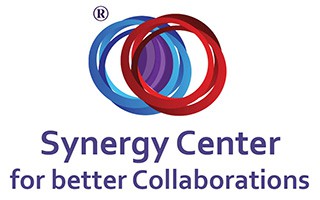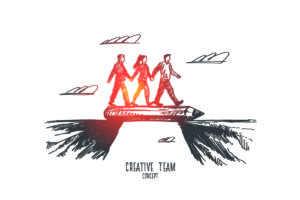There are three things, which determine interactions – general and synergistic:
- Diversity
- Boundaries
- Communication
This is according to Dr. Rami Ben-Yshai, in his book Organizational Synergy: A Practical Guide – Recalibrate Interactions to Achieve Peak Engagement, Productivity and Profit.
Synergy requires diversity most fundamentally to exist — without diversity, it’s nearly impossible to create synergy. Diversity’s a unique dimension of synergy. Forms of interactions, whether they general or synergistic, are functions of boundaries and communication dimensions, on the other hand.
Let’s jump deeper to learn how and why synergy creation’s a function of diversity.
Diversity as a Determinant of Synergy
For synergy to exist between elements, there must be diversity — uniform elements can’t create synergy between them. Synergy’s a complex process, although it’s an everyday occurrence. Take for instance reproduction is a form of synergy, because two human beings who’re different in terms of gender must come together to make an entirely new reality — another human being.
However, forging a new reality mutually isn’t always a bed of roses, as the author would admit from his personal experience. Creating synergy between culturally different entities is a big challenge, because it has some implications:
- Abandonment of one’s culture
- Learning of each other’s culture
- Assimilation (acculturation)
Cultural change’s a usually slow, but painful process – not everyone’s comfortable with the idea of abandoning their reality for the sake of creating a completely new one. Cultural reform’s something that often faces natural resistance, especially if the prevailing culture’s deeply entrenched, and has demonstrated success in the past.
Resistance to change’s inborn just as our curiosity to learn and experience different cultures is. However, curiosity and exposure don’t seem enough to counter our innate resistance to cultural change. The latter can be more so if you view another culture as a threat to your survival and self-protection.
The good news, though, is that, the more one’s exposed to a different culture, the more one’s tolerance and understanding increase toward the said culture. With more tolerance and understanding, it becomes easier to break boundaries, laying a fertile ground for fostering synergy.
Factors That Determine Synergy
Other than curiosity and exposure, Ben-Yshai identifies three other factors that aren’t enough to foster synergy:
- Exciting vision
- Good intentions
- Confident declarations
- Radical changes to an organizational culture following a buyout.
It’s evident that creation of synergy requires high quality of interactions (as that’d lead to high quality synergy). And it all starts with acknowledging diversity — that individuals have different characteristics, whether they be within and between organizations.
Acknowledgment of Diversity
Managers should acknowledge diversity – not regard employees as organization’s property. Looking at employees through a lens of human capital tends to cloud one’s judgment, especially regarding diversity.
And acknowledging diversity means that you’ve to cater to the different needs of diverse employees. This is a reality (postmodern) of twenty-first century organizations, and seems inescapable. Increasingly, it’s becoming necessary to embrace diversity. With diversity comes synergy, which’s an important recipe for organizational success, development and advancement.
You shouldn’t confuse diversity with inequality. Though, it’s clear that diversity relates to heterogeneity or dissimilarity. It’s important to acknowledge diversity, because it’d enable you to recognize differences in managerial styles based on gender, cultural background, individual differences, and so forth.
Many successful organizations acknowledge and respect diversity. They do that not because of affirmative action, laws or regulations, because they recognize how important diversity is in developing, advancing and succeeding their organizations. Acknowledgment of diversity means recognition of value of what different people contribute.
Individual differences reflect diversity in terms of:
- Knowledge
- Profession
- Social role
- Cultural or social customs or experiences
- Inborn traits – race, age, gender and origin.
Diversity depends on uniformity and uniqueness, both of which are necessary for implementing diversity in an organization. Uniformity manifests itself when organizational elements (units, individuals, departments) work toward a common goal or vision in line with strategic direction or purpose. On the other hand, the manifestation of uniqueness is in legitimacy and encouragement to develop sub-cultures by units and departments.
In Conclusion…
Synergy depends on diversity to function. However, diversity is a function of uniformity and uniqueness, which play an important role in implementing diversity in an organization. Postmodern organizations are complex, and the determinants of diversity work toward giving them legitimacy and sub-cultures, which are crucial for success, development and advancement.




